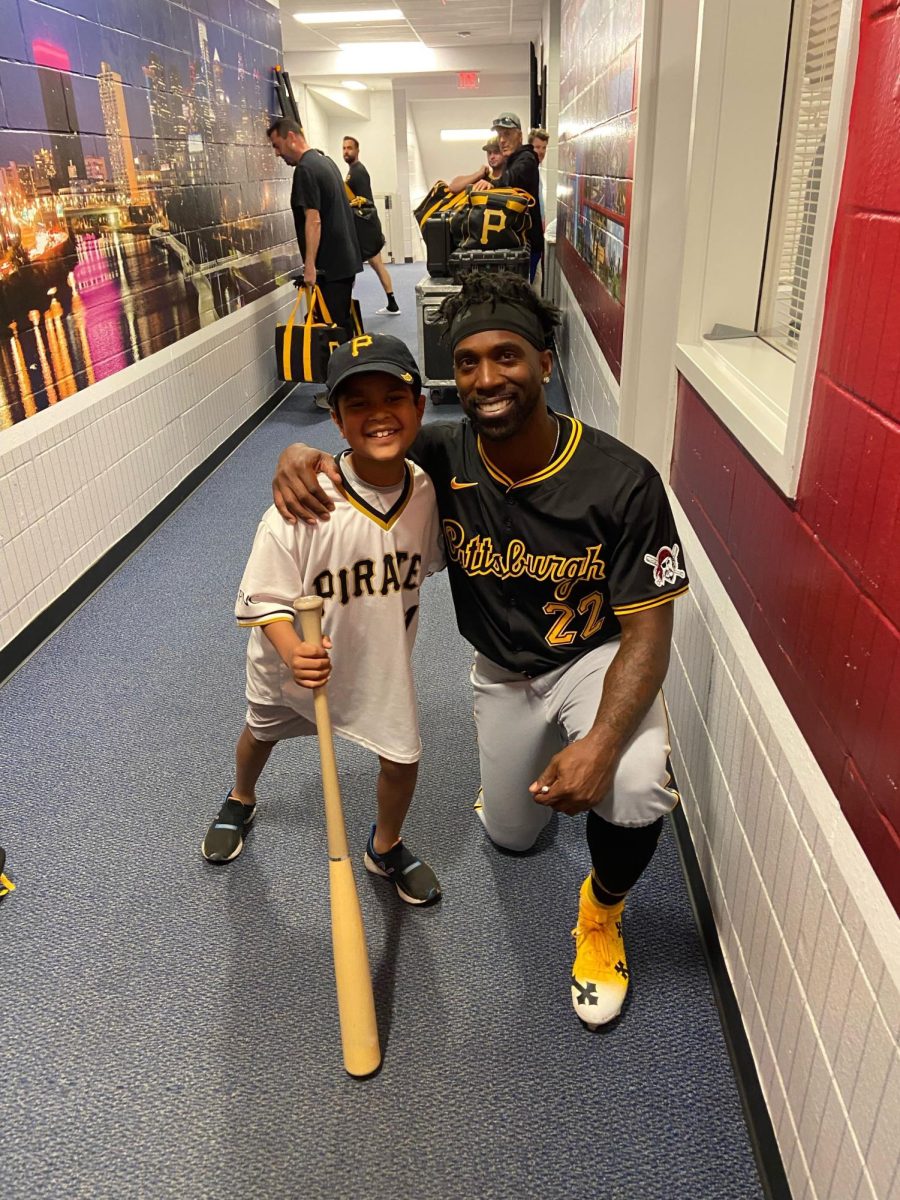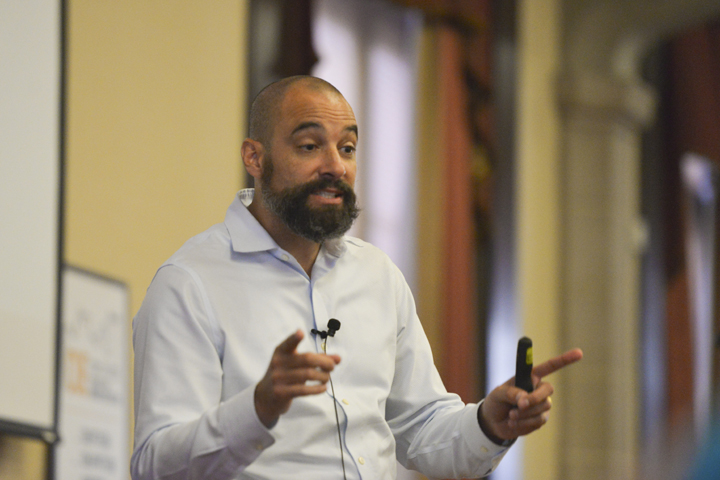On the set of the 1993 film “Poetic Justice,” when the cameras weren’t rolling, Maya Angelou saw two young men cursing at each other and grabbing for each other’s throats.
She pulled one of the young men out of the budding fight and told him that he mattered as tears rolled down his cheeks. As Angelou walked away, someone on the set informed her the young man was the famous rapper Tupac Shakur. A couple days later, Shakur’s mother called Angelou and told her that she saved her boy’s life.
Jeff Duncan-Andrade, in a lecture Thursday evening, told this anecdote to a crowded room in the University Club because of Tupac’s unprecedented ability to “reach to teach,” and Angelou’s use of hope to inspire him.
Andrade –– associate professor of Raza studies and education at San Francisco State University and the founder of Roses in Concrete Community School in Oakland, California –– gave a talk to more than 350 elementary-aged children, high school students, college students and professors. Pitt’s Center for Urban Education sponsored the lecture, which Andrade titled “A Note to Educators: Hope Required when Building Roses from Concrete.”
Inspired by lyrics from Tupac’s “Mama’s Just A Little Girl,” Andrade’s lecture title referred to Tupac’s lyrics about seeing a rose in the concrete, in which the late rapper drew attention to its “tenacity” instead of its damaged petals. Andrade drew an analogy between the lyrics and the public school system, which he said views students in low-income areas as damaged petals rather than students with incredible resilience.
“It’s time for adults to start framing for young people how amazing they really are,” Andrade said.
In his talk, Andrade argued the current ignorance toward student inequality is furthering student’s hopelessness in the face of the constant stress that often comes with living in low-income neighborhoods –– stresses such as neighborhood shootings, drug deals and financial destitution.
“It’s the worst kept secret in this country — wealth and white mean safety,” Andrade said.
Andrade said the crucial part of bridging this gap between educators and students is providing the “trifecta” of critical hope –– material, socratic and audacious hope. The public school systems need to begin using the classroom as a way to bring hope into their students lives.
“No gardeners blame the seeds for not growing,” Andrade said.
In Pittsburgh, 55 percent of black girls are living in poverty compared to 15 percent of white girls living in poverty, according to a report the FISA Foundation released last week.
Material hope, Andrade said, is meeting the basic needs of the student. If children have no coat or lunch, these needs are going to be more pressing to them than getting their homework done. Socratic hope, then, Andrade explained, was the idea that teachers model lessons not only in the classroom, but also in the way they live their life.
“This [socratic hope] is the gap between being liked and being loved,” Andrade said.
The final part of building hope in the classroom, he said, is constructing audacious hope which involves creating “microecosystems” in the classroom that reflect the reality of the outside world on a smaller scale. This would allow both students and educators to engage in real, relevant discussion about the world that exists beyond the walls of the classroom, even though that often means addressing difficult ideas.
“We are loathe to touch any real conversations in schools right now,” Andrade said.
According to Andrade, the current structure of school systems resents the disorder that underprivileged students bring to the classroom, when, in reality, teachers need to be taught to love their students unconditionally despite the complexity of teaching them.
“If it’s not messy it’s not meaningful,” Andrade said.
Andrade cited the fact that inequality is the biggest threat to the world as evidence that bringing conversations about real-world experience in the classroom is more pressing than ever. According The National Center for Post Traumatic Stress Disorder, one in three urban low-income youth display symptoms of PTSD. Andrade explained that this is caused by a lack of resources coupled with continual exposure to insecurity. He continuously stated the need for an open dialogue between teachers about how to best reach these struggling students.
Rev. Mary Buckley, who is working on her doctoral degree in educational leadership at Duquesne University, was part of the audience eager to learn about the potential in community youth. Buckley attended the lecture to further her education as both a teacher and a pastor.
“The urban church should be involved in the lives of the African-American youth in a positive way,” Buckley said.
Lori Delale-O’Connor, who is the associate director of research and development at the Center for Urban Education, said in order for all students to be viewed in a positive light, school systems need to undergo a perspective shift.
“If we think about the achievement gap, it implies that there are problems with the students, as opposed to thinking about what things have they not received from our school system that their counterparts, who are doing better –– typically white middle-class students –– have received,” O’Connor said.
To engage with students and encourage their growth, Andrade playfully referenced putting a $100 bill in a classroom textbook, saying he had complete faith that it wouldn’t be stolen. Likewise, if he put the money in a Tupac book of poetry, he said the money would be gone in minutes.
“It’s not that young people aren’t interested in literacy, it’s that they aren’t interested in the literacy we are giving them,” Andrade said.
Andrade differentiated between “schooling” and “education.” Schooling is learning to accept one’s place in society. Education is learning how to transform and change that place for the better.
“[We] have to find a way home into the heart of the student … gotta find a way to bust up the concrete,” Andrade said. “[We need] to start reclaiming the lives of the babies on our block.”



